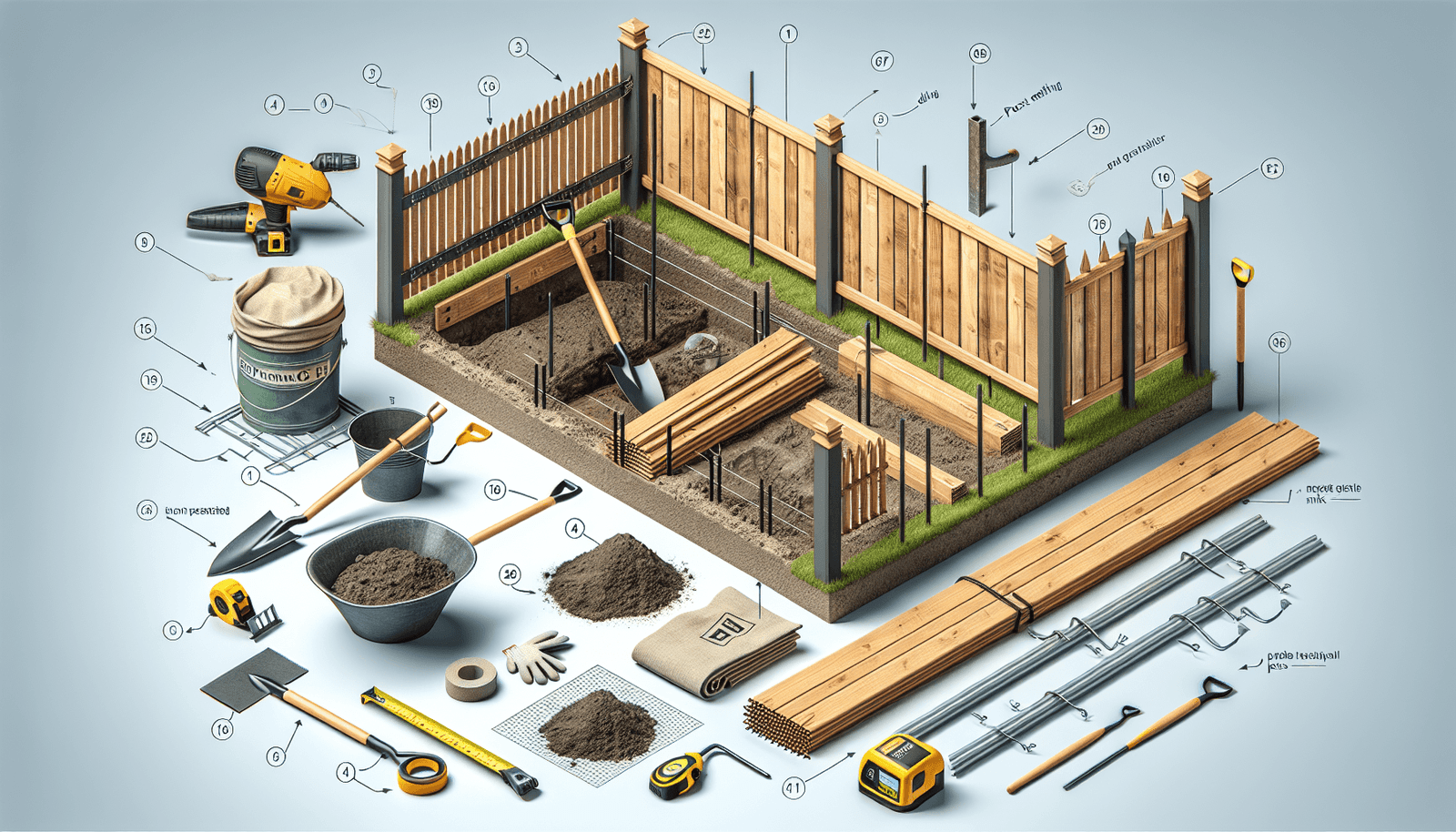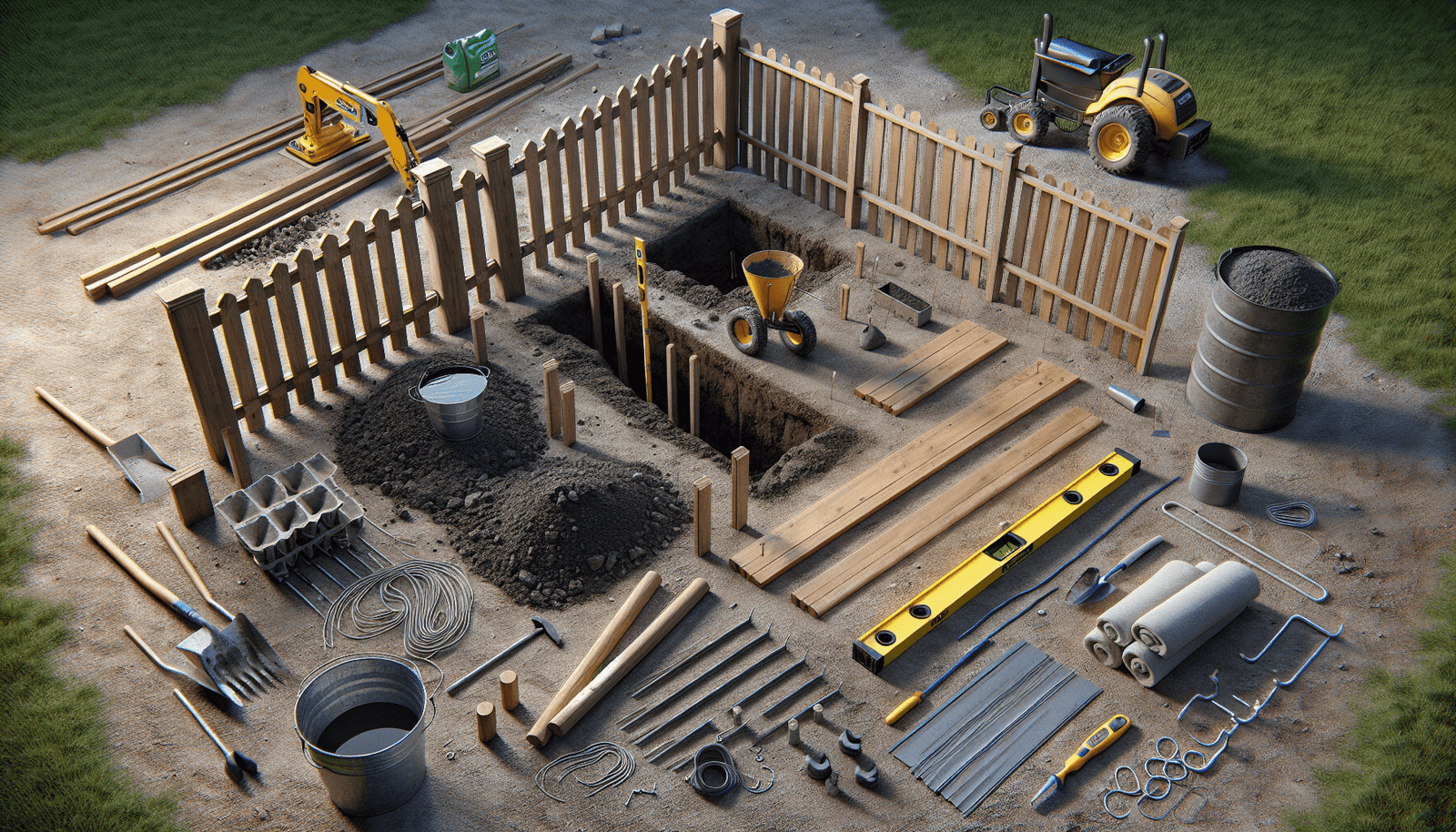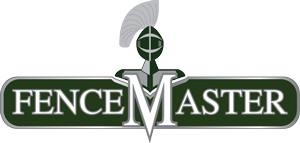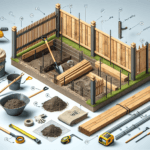
Successfully establishing a boundary involves meticulous planning and careful execution. A well-thought-out project blueprint can facilitate a smooth experience throughout the various construction phases.
Conducting a thorough site assessment is crucial for identifying any potential challenges that may arise during the setup.
Select materials that fit your specific needs, weighing factors like durability and visual appeal.
After finalizing those choices, effectively prepare the area by clearing it and marking the intended fence layout. These foundational steps pave the way for a successful installation journey.
Click here to learn more about: residential.html
Understanding Fence Setup Requirements For Residential And Commercial Projects
Building on the foundation established in earlier discussions, understanding the significance of precise measurement accuracy is vital for effective fence setup. Whether focusing on residential needs or commercial requirements, accurate measurements ensure that boundaries align perfectly with property lines and meet attractive design standards.
During the materials procurement stage, selecting the right components based on measurement accuracy affects not only the longevity of the structure but also the required upkeep. Ensuring accurate measurements aids in strong foundation laying, crucial for upholding the fence’s stability. Proper fastening techniques further enhance secure installation, and consulting with experts based on precise measurements can streamline the process.
Moreover, a detailed project blueprint centered on measurement accuracy helps identify necessary permits acquisition, ensuring that all zoning regulations are met. This keeps the final construction in line with community standards. Considering how accurate measurements relate to landscaping compatibility and access control setup adds another layer of functionality.
Finally, implementing maintenance tips focused on measurement accuracy and effective weatherproofing measures will prolong durability and ensure structural integrity over time, ultimately achieving the envisioned aesthetic design.

What Are The Essential Construction Phases In Fence Installation
In the context of effective fence setup, understanding the construction phases is crucial for achieving a sturdy and well-designed boundary. Each step builds on the groundwork laid earlier, contributing to both the aesthetic design and durability of the finished product.
Phase 1 involves logistical planning, which defines the purpose of the fence while ensuring compliance with zoning regulations. This phase also incorporates a thorough site assessment to identify any potential obstacles and outline necessary utility checks.
Following this, Phase 2 focuses on materials procurement; selecting the right type of fencing materials, like wood or vinyl, influences not only the look but also the maintenance requirements and lifespan of the structure.
Phase 3 centers on site preparation, which is essential for effective foundation laying. This step ensures that all obstacles are cleared and that the area is ready for subsequent construction phases. Phase 4, which involves framework construction and panel installation, can greatly benefit from proper tool selection and fastening techniques to ensure that everything is securely installed.
Finally, Phase 5 stresses the importance of quality control and site cleanup. These finishing touches not only enhance the fence’s structural integrity but also contribute to an aesthetically pleasing outcome. Effectively communicating with neighbors during this phase can further solidify good relationships and ensure community standards are maintained. Understanding these construction phases will ultimately guide you towards completing an efficient fencing project that meets your specific needs and expectations.
Fencing Projects
- Proper logistical planning helps define the purpose of the fence and ensures compliance with local regulations.
- Choosing the right materials, such as wood or vinyl, can influence the fence’s maintenance requirements and durability.
- Site preparation is crucial for avoiding obstacles that could hinder the construction process.
- Quality control and site cleanup at the end of the project are vital for achieving a sturdy and aesthetically pleasing fence.
Importance Of Accurate Measurement In Achieving Optimal Fence Performance
Foundation of Measurement Accuracy
Building on the insights from the essential construction phases, accurate measurement is a cornerstone in reaching optimal fence performance. Every precise figure not only ensures that each piece fits seamlessly but also significantly enhances the structure’s durability and aesthetic design.
Streamlining Installation with Precise Calculations
When all dimensions are spot-on, implementing finishing touches simplifies the process and leads to a refined final product. These exact calculations help mitigate potential issues during hardware installation, ultimately safeguarding the fence’s structural integrity.
Long-Term Benefits of Accurate Measurements
Investing time in this critical phase contributes to long-lasting and visually pleasing fencing solutions that endure various environmental conditions. Strong alignment verification in the early stages encourages effective integration with the landscape, enhancing access control setup and boundary definition.
Blueprint for Success
After reviewing the construction phases, it is vital to understand how accurate measurements set the groundwork for a successful project. This foundation leads into exploring high-quality materials procurement, ensuring not just the durability of the finished product but also its alignment with local zoning regulations. Ultimately, a well-documented project blueprint that emphasizes measurement accuracy guides every subsequent step towards a successful fence setup.
Steps In The Materials Procurement Process For High-Quality Fencing Supplies
Selecting high-quality materials is crucial in any fencing project. Understanding the importance of accurate measurements and the construction phases provides a strong basis for this process. Evaluate your specific project needs to ensure the fencing type aligns with your goals for durability, aesthetic design, and compliance with local zoning regulations.
Start by accounting for necessary permits acquisition and assessing how various materials perform over time. Research potential suppliers and consider their reviews and ratings to make informed decisions and identify reliable vendors.
Moreover, performing utility checks is vital to avoid disruptions during installation. After evaluating the quality of materials through samples and confirming they meet industry standards, gather quotes from multiple suppliers. This step should incorporate client consultation needs and delivery times to allow for efficient comparisons.
Finally, effectively negotiate terms to secure the best possible pricing structure and service guarantees. Placing your order with confidence will support you in achieving a successful fence setup that fulfills your practical and aesthetic requirements.
Acquiring Fencing Materials
- Assessing specific needs ensures the right type of fencing is selected for the project.
- Researching suppliers and reading reviews can help identify reliable vendors.
- Utility checks are essential to prevent installation disruptions.
- Gathering multiple quotes allows for better negotiation and comparison of terms.
How To Select The Right Tools For Efficient Fence Installation
Picking the right tools is crucial for a successful fence setup and ties directly to the quality of the materials procurement acquired earlier. A well-equipped toolkit not only streamlines the installation process but also ensures that all aspects of your project blueprint are addressed efficiently.
Completing a fencing project requires the right set of tools tailored to the specific demands of your build. Familiarizing yourself with must-have equipment, including post hole diggers, levels, and saws, will facilitate a smoother installation process.
Quality tools play a significant role—investing in durable equipment not only ensures longevity but also enhances performance. When considering landscape compatibility, remember to match your tools with the type of fencing materials you plan to use, whether it be wood, vinyl, or metal, as each necessitates specific tools for the best results.
Assessing the size and complexity of your installation will guide you in selecting any specialized tools required for larger projects. Regular maintenance tips can also extend the life of your tools, allowing for effective performance over time.
Tools like drills and impact drivers are essential for hardware installation, while levels and measuring tapes ensure measurement accuracy for precise alignment verification. Additionally, understanding fastening techniques and adopting safety protocols will contribute to a more efficient workflow and superior results.
Shifting from the previous section on acquiring high-quality fencing supplies, we will now explore essential landscape integration techniques, maintenance tips, coating application methods, soil testing procedures, and effective drainage solutions.
Effective Safety Protocols For Fence Installation To Protect Workers And Property
Highlighting the importance of safety, this section builds on insights from earlier discussions about acquiring quality materials and selecting the right tools for your project. Ensuring worker safety during fence setup is essential, requiring comprehensive protocols to protect both personnel and property.
Site Assessments
Start with thorough site assessments to confirm landscape compatibility and uncover hidden dangers, such as underground utilities or uneven terrain. Identifying these hazards is crucial to prevent accidents and ensure a secure working environment for the installation crew.
Safety Plan Development
Creating a clear safety plan enhances structural integrity and safeguards your team throughout the construction phases. This plan should outline emergency procedures and establish clear lines of communication, fostering a proactive safety culture.
Training and Personal Protective Equipment
Regular training sessions are vital to emphasize the need for personal protective equipment (PPE). This practice helps workers manage tools safely, lowering the risk of injuries. Consistent communication among team members will further reduce risks on-site, facilitating smoother execution during critical phases of the project.
Gate Assembly Techniques
Once these critical safety measures are addressed, you can focus on efficient gate assembly techniques that guarantee the durability and functionality of the finished product. Prioritizing safety protocols will not only protect workers but also reinforce the overall quality of the fence setup.
| Safety Measure | Description |
|---|---|
| Site Assessments | Identify potential hazards, including underground utilities and uneven terrain. |
| Safety Plan | A well-defined plan enhances structural integrity and protects workers. |
| Personal Protective Equipment (PPE) | Regular training sessions ensure workers manage tools safely and effectively. |
| Team Communication | Consistent communication among team members minimizes on-site risks. |
Gate Assembly Techniques For Enhanced Durability And Functionality
Building on the importance of safety and tool selection discussed earlier, we now focus on effective gate assembly methods that maximize both durability and functionality. Choosing high-quality materials, such as metal and vinyl, is key to reinforcing the security and ease of maintenance of your gate.
Utilizing precision in alignment and incorporating robust hardware during the construction phases greatly enhances a gate’s performance and lifespan. Adequate preparation and attention to detail in your assembly techniques ensure that every component of your fence setup meets high craftsmanship standards.
Regular maintenance checks should not be overlooked; these durability checks, combined with targeted weatherproofing treatments, play an essential role in extending your gate’s effectiveness. Establishing a strong access control setup will enhance performance even further, ensuring that your fencing solution adheres to security standards and remains resilient through various seasonal changes.
Incorporating customization options in the gate assembly can also meet specific aesthetic design preferences, allowing your project blueprint to align perfectly with your overall landscape integration goals. This approach not only improves visual appeal but also supports the long-term functionality and structural integrity of your fence system.
The Role Of Quality Control Measures In Ensuring Fence Reliability
Continuing from the outlined techniques for gate assembly and safety protocols, establishing a reliable structure requires strong evaluation processes. These inspection procedures are essential in ensuring that every aspect of the fence setup meets strict quality standards.
By carefully assessing materials procurement before and during installation, potential issues can be found early, avoiding future problems. This proactive approach not only preserves the aesthetic design integrity of the project blueprint but also protects the safety and functionality emphasized in earlier discussions.
The installation crew, skilled in craftsmanship standards, plays a key role in enhancing the structural integrity and longevity of the fence. Maintaining thorough quality benchmarks ensures that the end product meets community standards and can resist various environmental challenges, providing peace of mind to property owners.
Aspects such as measurement accuracy and proper fastening techniques, along with regular durability checks, are vital. These actions greatly contribute to the long-term performance of the fence, reinforcing the significance of correct gate assembly discussed earlier and ensuring a smooth integration with the surrounding landscape.
Fence Installation Quality
- Strong evaluation processes ensure high standards are met during installation.
- Timely assessment of materials can prevent potential issues and enhance safety.
- Skilled installation crews greatly impact the longevity of the fence.
- Quality benchmarks align with community standards and boost property value.
Post Installation Tips For Long Lasting Fences And Maintenance Strategies
Regular Inspections
Building on the foundation of quality control and evaluation processes that ensure fence reliability, ongoing maintenance is a vital aspect of preserving your fence’s integrity. Regular inspections are essential for quickly identifying wear or damage caused by environmental factors, especially after seasonal changes.
Routine Cleaning
Conducting routine cleaning of your fence prevents dirt buildup, which can speed up deterioration over time. Depending on the type of fencing materials, choosing the right cleaning agents is crucial to maintain both appearance and durability. Routine assessments can help determine the ideal approach for the specific fence type.
Protective Measures
Implementing protective strategies, such as sealing or staining wooden structures, and applying rust-proof treatments for metal fencing, significantly increases lifespan. Additionally, being mindful of your neighbor’s property and keeping open lines of communication about maintenance schedules creates a respectful environment, particularly concerning shared boundary issues.
Adhering to Zoning Regulations
Addressing zoning regulations is equally important, as compliance plays a significant role in upholding community standards and maintaining property values. By regularly performing durability checks and following prescribed procedures, you ensure that your fencing setup remains a valuable investment for years to come. This involves ensuring alignment verification and proper hardware installation to meet necessary guidelines.
Final Touches and Client Communication
Lastly, applying finishing touches and keeping lines of communication open with clients about project timelines and maintenance tips can enhance customer satisfaction and loyalty. By integrating landscape compatibility and utility checks into your regular maintenance routine, you create a fence that not only serves its primary purpose but also complements its surroundings.
Navigating Local Zoning Regulations And Permits For Fencing Compliance
Continuing the focus on maintaining community standards from prior discussions, understanding local regulations for your fencing project is essential for compliance and preventing delays. These guidelines detail permissible structures within your area, which can greatly improve operational efficiency during the planning phase of your installation.
A thorough investigation into the specific restrictions is necessary to avoid unexpected costs and streamline the approach for your fence setup. Knowledge of height limitations and materials procurement applicable to your project is vital in aiding your decision-making process.
Engaging in expert consultation during the permits acquisition phase can be beneficial, as professionals can clarify requirements and provide followup service. This support not only facilitates a smoother approval experience but also ensures adherence to safety protocols and craftsmanship standards.
Fencing Regulations
- Understanding local regulations can prevent costly fines and project delays.
- Researching permissible materials and heights ensures compliance with community standards.
- Engaging with professionals can simplify the permit application process and enhance the likelihood of approval.
- Service guarantees from contractors can provide peace of mind and protect your investment.
How Much Does Fence Installation Cost Fencemaster Houston
Decorative And Custom Fence Design Options From Fencemaster Houston


